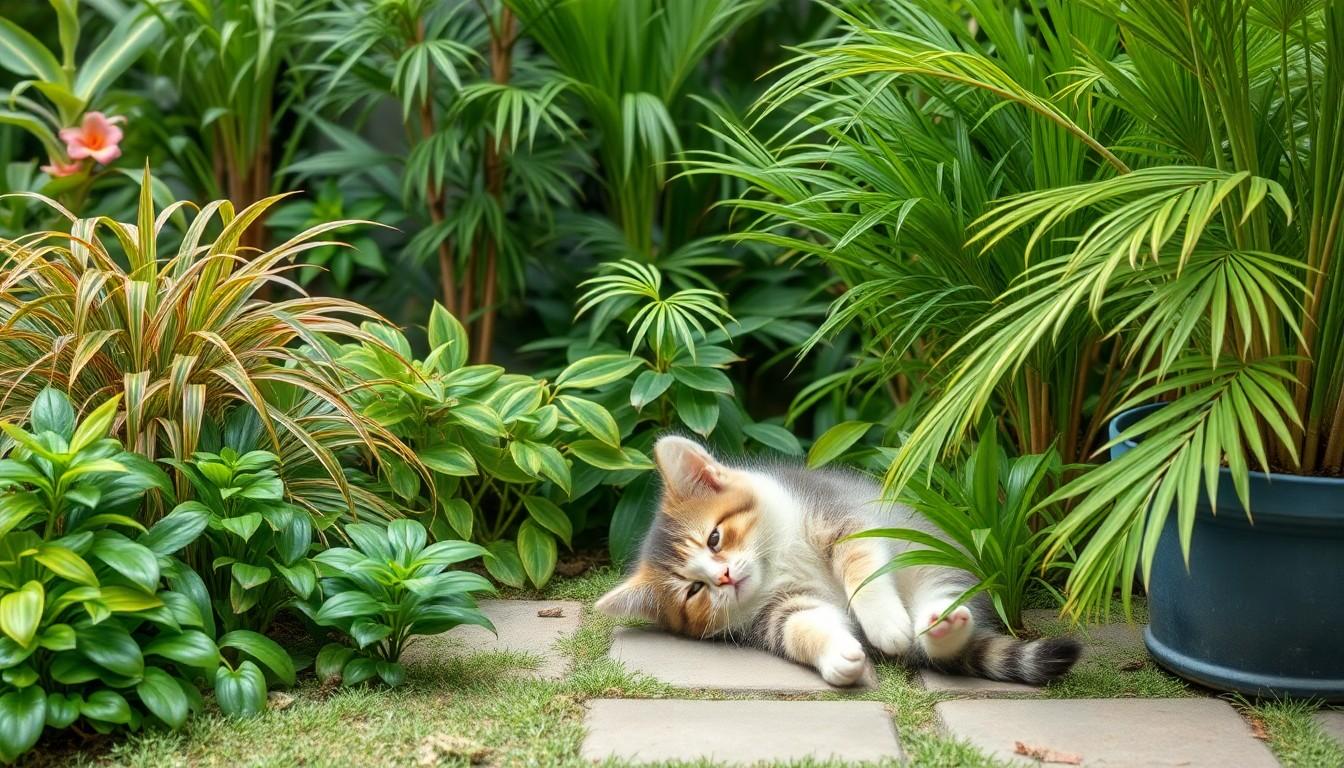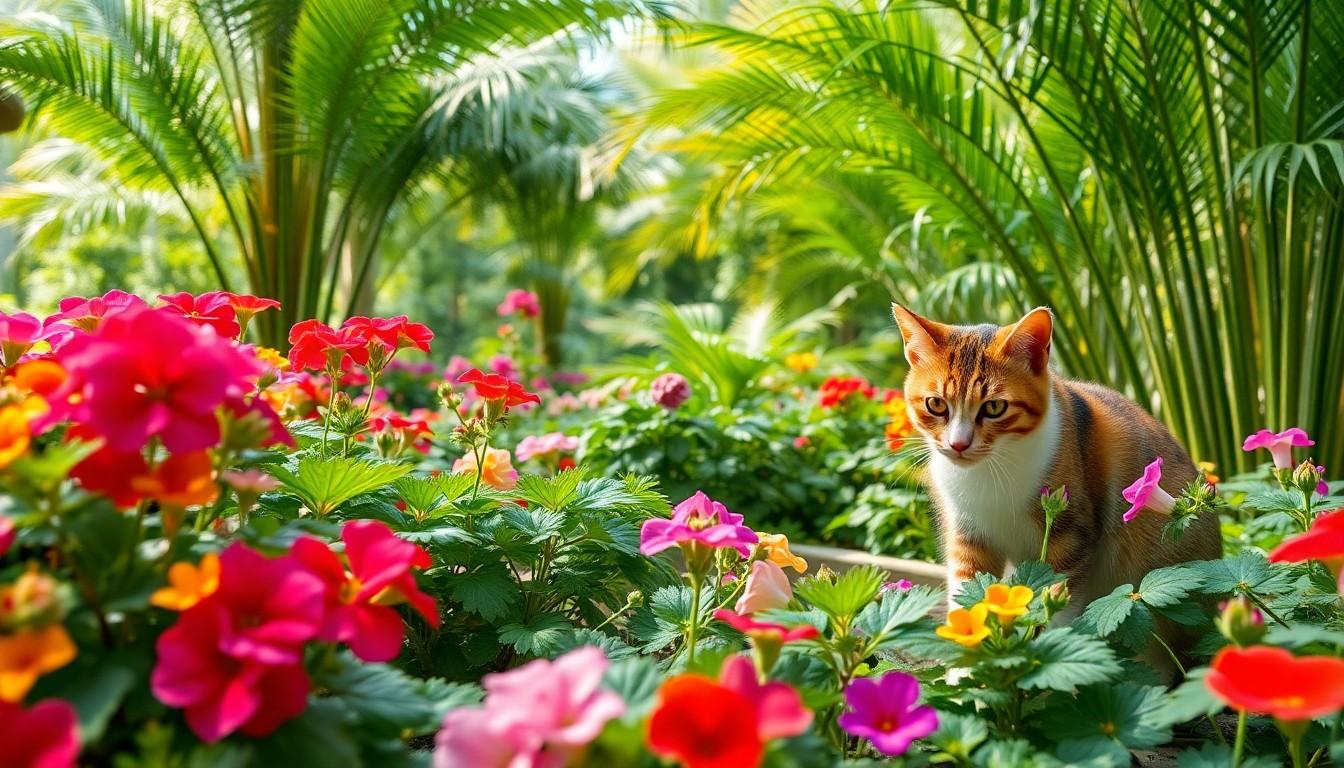Cats are curious creatures, always on the lookout for new adventures—especially in the great outdoors. But for cat owners, the thrill of letting their feline friends explore can quickly turn into a worry fest. With so many plants out there that are toxic to cats, how’s one supposed to create a safe and inviting garden?
Fear not, plant lovers! There are plenty of outdoor plants that are not only safe for your whiskered companions but can also make your garden the envy of the neighborhood. From vibrant flowers to lush greenery, these cat-friendly plants will have your furry friend frolicking without a care in the world. So grab your gardening gloves and get ready to cultivate a space that’s as safe as it is stunning—because who says you can’t have it all?
Importance Of Choosing Safe Plants
Choosing safe plants for outdoor spaces plays a critical role in promoting a healthy environment for cats. Many popular plants pose significant health risks to felines. Cats’ natural curiosity can lead them to nibble on leaves or dig in soil, exposing them to potential toxins.
Selecting plants known to be non-toxic alleviates common concerns for cat owners. Geraniums, snapdragons, and catnip represent just a few examples of safe options that enhance gardens without jeopardizing pets’ well-being. Many cat-friendly plants also provide sensory stimulation, enriching a cat’s outdoor experience with various colors and textures.
Prioritizing non-toxic choices impacts not just the health of felines but also the peace of mind of their owners. Cats frequently spend time outdoors, and a secure garden ensures they can explore without fear. The education surrounding safe plants empowers pet owners to make informed decisions.
Researching plant options aids in differentiating between safe and dangerous species. Comparing the benefits of aesthetics versus health emphasizes the importance of safety. Engaging with local horticulture experts can yield helpful insights about which plants are suitable for a cat-friendly environment.
Ensuring the garden remains a safe space strengthens the bond between cats and their owners. Cats thrive in outdoor settings when they can safely enjoy the benefits of nature. Creating an inviting, secure outdoor space contributes significantly to a cat’s happiness and well-being.
Popular Outdoor Plants Safe For Cats

Many cat owners seek plants that beautify their gardens while ensuring feline safety. Consider these popular options that are non-toxic and thrive outdoors.
Catnip
Catnip attracts cats with its aromatic scent. This herb stimulates playful behavior and provides entertainment. Planting catnip in sunny spots enhances its flavor and aroma. Grown in gardens, catnip serves as a wonderful addition that encourages outdoor playtime. Cats enjoy rolling in it, enhancing their sensory experience.
Spider Plant
Spider plants are hardy and thrive in diverse conditions. They produce long, arching leaves that create a lush environment. These plants filter air pollutants, contributing to a healthier outdoor space. As cats often enjoy the texture of spider plant leaves, it encourages play without harming their health. Available in many varieties, spider plants allow customization in garden design.
Bamboo Palm
Bamboo palms are ideal for shady areas, providing a tropical feel. They add height to gardens, creating a lush backdrop. This plant is known for its air-purifying qualities, improving overall garden health. Cats often appreciate the soft fronds, making it a perfect play area. Resilient and visually appealing, bamboo palms offer both safety and beauty for outdoor cats.
Tips For Creating A Cat-Friendly Garden
Creating a safe garden for cats involves careful planning and consideration. Focus on strategic placement and consistent maintenance to ensure a thriving outdoor space for both cats and plants.
Placement Strategies
Choose sunny spots for catnip, as it thrives with plenty of sunlight. Position spider plants near window boxes where cats can easily reach them. Create shaded areas using bamboo palms, allowing cats to relax away from direct sun. Arrange plants in clusters to encourage exploration while keeping non-toxic varieties together. Prioritize pathways that lead to safe zones, ensuring cats feel secure while wandering. Consider placing raised beds or pots to keep plants out of reach of any potential plant decorations that might be harmful.
Maintenance Practices
Regularly check for dead leaves or debris around the plants to prevent unwanted pests. Use organic fertilizers to maintain healthy plant growth without exposing cats to harmful chemicals. Water plants early in the morning to avoid water accumulation that could attract insects. Trim back any overgrown foliage to ensure visibility and comfort for cats exploring the garden. Monitor plants for signs of stress or disease, addressing any issues promptly to maintain a safe environment. Consistent maintenance helps create a beautiful and secure outdoor sanctuary for cats.
Conclusion
Creating a cat-friendly outdoor space is not just about aesthetics; it’s about ensuring the safety and well-being of beloved pets. By choosing non-toxic plants like catnip and spider plants, cat owners can cultivate a vibrant garden that encourages exploration and play.
With careful planning and maintenance, it’s possible to design a sanctuary that satisfies both the visual appeal and the safety needs of feline companions. Embracing the beauty of nature while prioritizing pet safety leads to a harmonious environment where cats can thrive. A thoughtful approach to gardening can enhance the bond between cats and their owners, making outdoor adventures enjoyable and worry-free.

